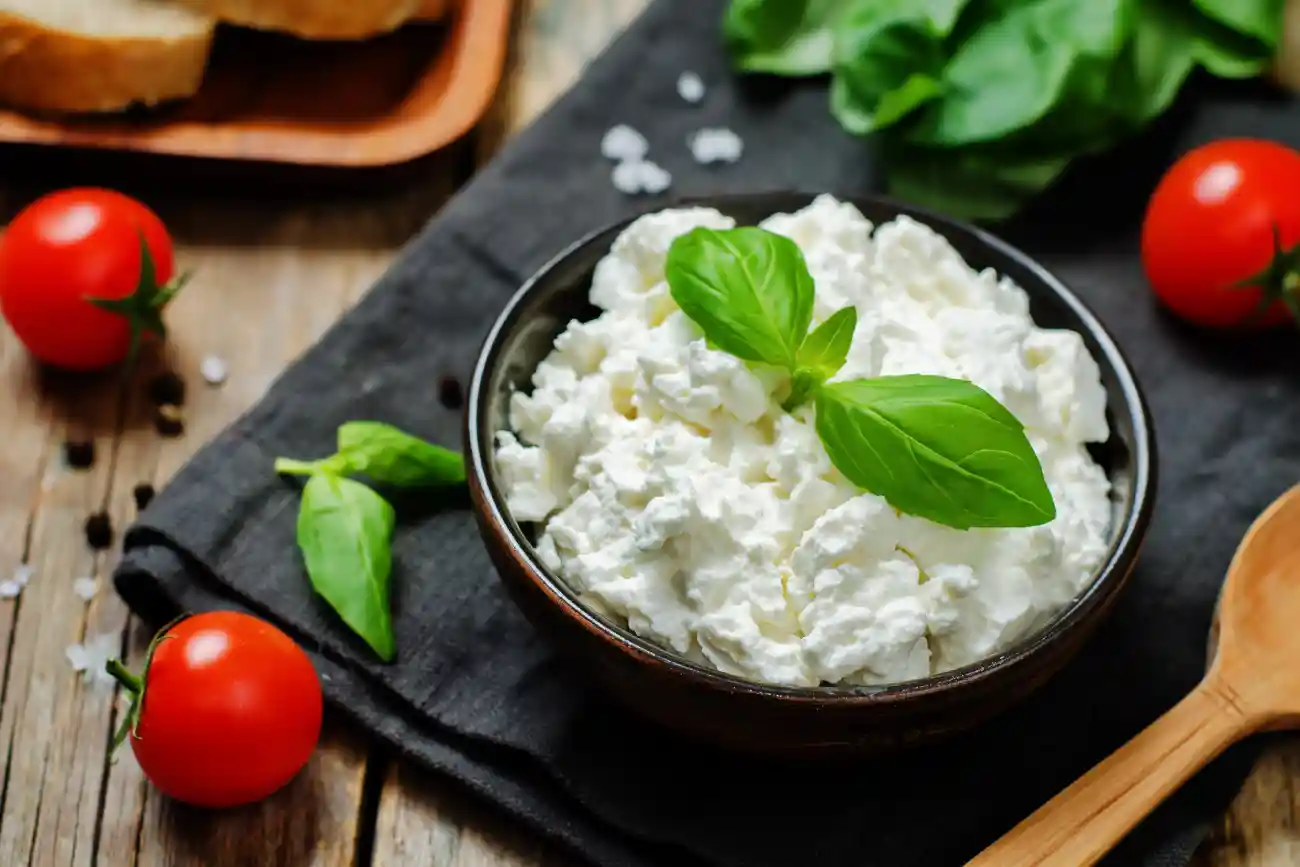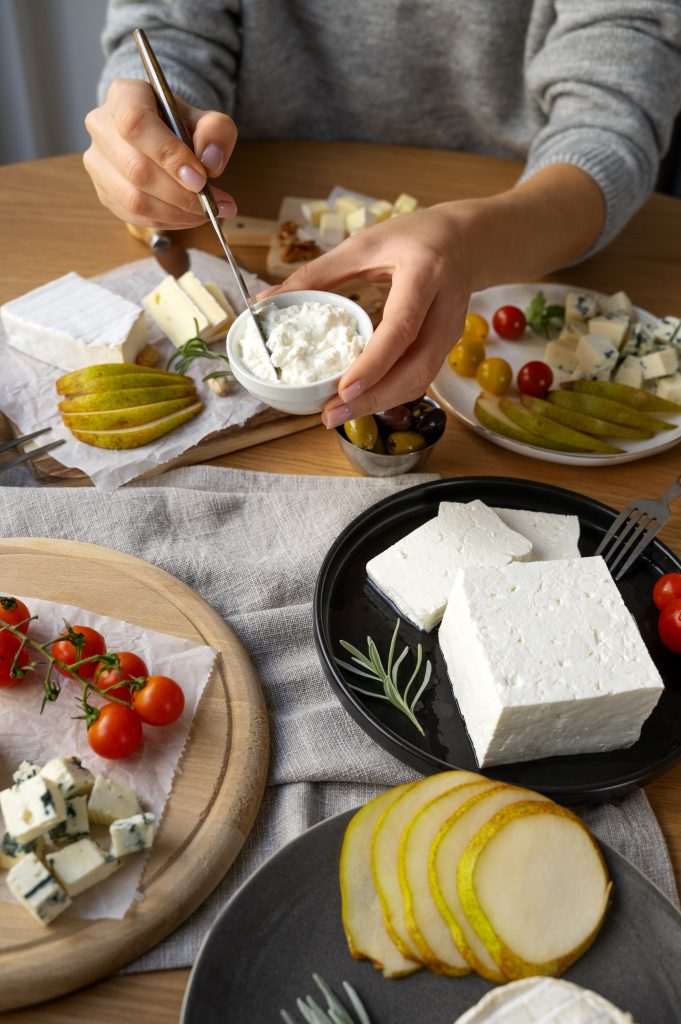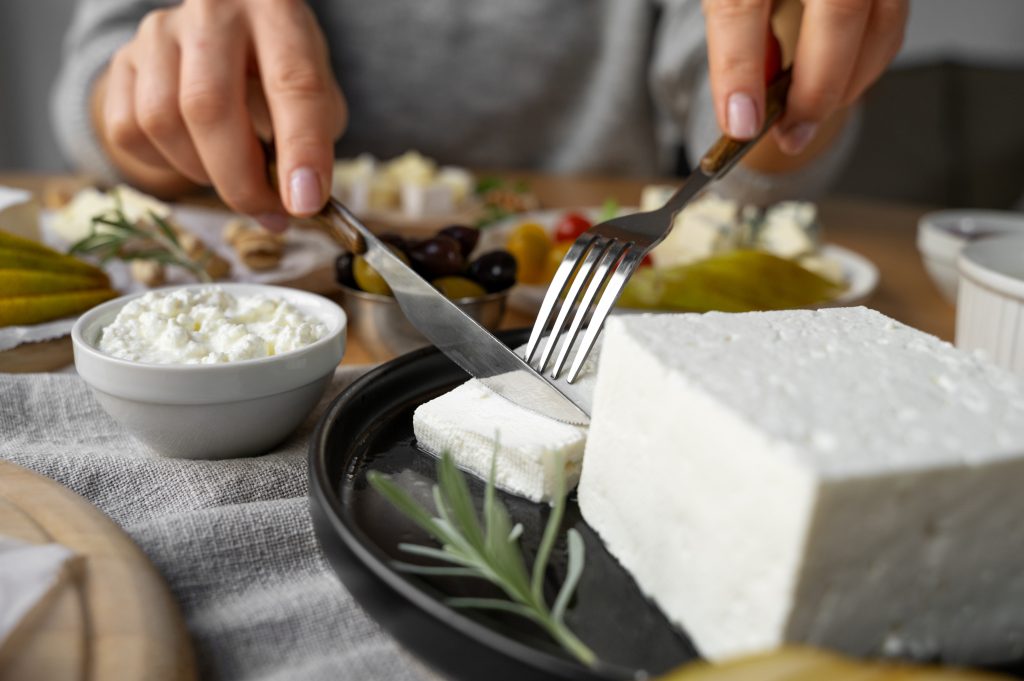How to season ricotta cheese is a culinary question many enthusiasts ponder. Ricotta, with its creamy texture and mild flavor, is a beloved ingredient in many dishes. By mastering how to season ricotta cheese correctly, you can elevate its taste and enhance your culinary creations. This guide will delve into the art of seasoning, offering insights into the best ingredients and techniques
The Basics of how to season ricotta cheese
Ricotta cheese is a true marvel in the world of gastronomy. Originating from Italy, this cheese is traditionally made from the whey left behind during the cheese-making process, a testament to the resourcefulness of Italian cheesemakers. Unlike most cheeses, which are made from curds, ricotta is unique in its origin from whey, giving it a lighter, creamier texture. This characteristic makes it not only a delight to the palate but also a nutritious addition to various diets. check out The Ultimate Guide to Whole Milk Ricotta.
The Unique Qualities of Ricotta
What sets ricotta apart in the culinary landscape is its remarkable adaptability. Its mild, slightly sweet flavor makes it a perfect canvas for a myriad of seasonings and flavors. Whether you’re looking to add a creamy texture to your lasagna or a fluffy filling to your desserts, ricotta can be seasoned and transformed to suit any dish. Its versatility extends from savory recipes, like stuffed shells and ricotta gnocchi, to sweet dishes, such as cheesecakes and cannolis.
Exploring the Origins and Types of Ricotta
To appreciate ricotta’s versatility fully, understanding its origins and the different types available is crucial. Traditional Italian ricotta is made from sheep’s milk whey, but variations now include cow, goat, and buffalo milk. Each type offers a unique flavor profile and texture. For those interested in exploring the classic version, “The Ultimate Guide to Whole Milk Ricotta” provides an in-depth look at ricotta made from whole cow’s milk, known for its richer flavor and creamier texture.
Nutritional Profile of Ricotta Cheese
Beyond its taste and versatility, ricotta cheese is a nutritional powerhouse. It’s an excellent source of protein, essential for muscle growth and repair. Additionally, ricotta is rich in calcium, crucial for bone health. It also provides other vital nutrients such as vitamin A, phosphorus, and zinc. For those conscious about fat intake, ricotta comes in whole milk and part-skim varieties, with the latter offering a lower-fat option without compromising on taste or nutritional value. To understand these differences in detail, exploring articles that compare whole milk and regular ricotta can be enlightening.
Ricotta in a Healthy Diet
Incorporating ricotta into your diet can contribute to a balanced and nutritious eating plan. Its high protein content makes it an excellent choice for vegetarians and those looking to increase their protein intake. The calcium in ricotta is vital for bone health, making it a great option for all age groups. For more comprehensive information on the health benefits of cheese, resources like the Dairy Council offer extensive research and data, highlighting how cheese can fit into a healthy diet. For more on the health benefits of cheese in general, the Dairy Council provides a wealth of information.
Popular Ingredients to Season Ricotta cheese
Seasoning ricotta cheese is akin to painting on a blank canvas; the mild and creamy texture of ricotta makes it ideal for incorporating a variety of flavors. Whether you’re preparing a savory dish or a sweet treat, the right seasonings can transform your ricotta into a culinary masterpiece. Here’s a closer look at some popular ingredients that can enhance your ricotta recipes:
Fresh Herbs: Aromatic and Flavorful :
- Parsley: This versatile herb adds a fresh, slightly peppery flavor to ricotta, making it perfect for pasta fillings and ricotta dips.
- Basil: With its sweet, yet savory profile, basil pairs wonderfully with ricotta, especially in Italian dishes like lasagna and caprese salads.
- Oregano: This robust herb brings a slightly bitter, earthy flavor, ideal for a more pronounced herby taste in savory ricotta dishes.
- More Options: There’s a wide world of herbs to explore, each with its unique flavor profile. For those looking to dive deeper into the variety of herbs and their culinary applications, the Herb Society offers a comprehensive resource, visit Herb Society.
Cheeses: Blending for Richness and Depth :
- Parmesan: Grated Parmesan can add a salty, nutty flavor to ricotta, enhancing its texture and taste in dishes like stuffed shells or ricotta gnocchi.
- Romano: Similar to Parmesan but with a sharper taste, Romano cheese can give ricotta an extra kick, perfect for robust Italian recipes.
- Mozzarella: For a creamier, more mellow addition, mozzarella blends seamlessly with ricotta, ideal for pizzas and calzones.
- Cheese Pairings: To learn more about how different cheeses complement each other, Cheese.com is an excellent resource, offering insights into cheese pairings and flavor combinations, Learn more about cheese pairings at Cheese.com.
Spices: Adding Warmth and Zest :
- Black Pepper: A classic seasoning, black pepper adds a subtle heat and earthiness, enhancing the natural flavor of ricotta.
- Garlic Powder: For a hint of pungency without the sharpness of fresh garlic, garlic powder is a great addition to ricotta mixtures.
- Red Chili Flakes: To introduce a bit of spice and color, red chili flakes can be sprinkled into ricotta, perfect for dishes that need a little heat.
- Spice Guide: For those interested in expanding their spice repertoire, The Spice House offers an extensive guide on various spices and their uses in cooking, helping you to perfectly season your ricotta creations, check out The Spice House.
Techniques for Seasoning Ricotta Cheese
Seasoning ricotta cheese is not just about the ingredients you choose; it’s also about how you incorporate them to achieve a harmonious blend of flavors. Here are some essential techniques to ensure your seasoned ricotta is nothing short of perfection:
1. Mixing and Blending Techniques :
- Gentle Folding: When adding herbs, spices, or other cheeses to ricotta, use a folding technique. This method involves gently turning the mixture over onto itself, which helps maintain the ricotta’s light, airy texture while ensuring even distribution of the seasonings.
- Consistency Check: Depending on your recipe, you may want a smoother or chunkier texture. For a smoother consistency, consider using a food processor or blender, but be careful not to over-process.
- Room Temperature Mixing: If possible, let your ricotta come to room temperature before mixing. This makes it easier to blend the ingredients smoothly and evenly.
2. Taste and Adjust: The Key to Perfect Seasoning :
- Incremental Seasoning: Start with a smaller amount of seasoning than you think you’ll need. It’s easier to add more seasoning than to correct an overly seasoned mixture.
- Taste as You Go: After each addition of seasoning, taste the mixture. This will help you understand how each ingredient alters the flavor profile and allows you to adjust accordingly.
- Consider the End Use: Think about how you’ll be using the seasoned ricotta. If it’s for a dish that will be cooked further, like stuffed pasta, remember that flavors will develop and change during cooking.
3. Achieving a Balanced Flavor Profile :
- Harmony of Flavors: Aim for a balance where each ingredient complements the others. For instance, if you’re using a strong herb like rosemary, balance it with a milder ingredient to prevent it from overpowering the ricotta.
- Contrasting Tastes: Experiment with contrasting flavors for a more complex profile. A hint of sweetness, like honey, can work well with savory herbs and spices.
- Consider Texture: Seasonings can also bring texture to ricotta. Ingredients like chopped nuts or seeds can add a pleasant crunch, offering a contrast to the creamy cheese.
Common Uses of Seasoned Ricotta in Dishes
Seasoned ricotta cheese is a culinary chameleon, adept at enhancing a wide array of dishes with its creamy texture and ability to meld with diverse flavors. From traditional Italian fare to inventive fusion cuisine, the applications of seasoned ricotta are boundless. Let’s delve into some of the most popular and creative uses of this versatile ingredient:
1. Italian Classics: A Staple Ingredient :
- Lasagna: In this beloved dish, seasoned ricotta adds a creamy layer that contrasts beautifully with the tangy tomato sauce and savory ground meat. Herbs like basil and oregano, mixed into the ricotta, infuse each bite with aromatic flavors.
- Manicotti and Stuffed Shells: These pasta dishes benefit greatly from a filling of seasoned ricotta. The cheese is often combined with spinach, herbs, and grated Parmesan, creating a rich and satisfying stuffing that oozes with flavor in every forkful.
- Baked Ziti: Seasoned ricotta can transform a simple baked ziti into a gourmet experience. Layered with pasta, marinara sauce, and mozzarella, the ricotta adds a creamy dimension that makes the dish more complex and comforting.
2. Desserts: A Sweet Surprise :
- Cheesecakes: While cream cheese is the traditional base for cheesecakes, adding seasoned ricotta can introduce a lighter, fluffier texture. Seasonings like vanilla, citrus zest, or almond extract can elevate the flavor profile.
- Ricotta Pies and Tarts: In desserts, ricotta takes on a sweet persona. Blended with sugar, eggs, and flavors like lemon or chocolate, it creates a deliciously smooth and creamy filling for pies and tarts, offering a delightful alternative to more traditional fillings.
3. Fusion Dishes: Innovation in the Kitchen :
- Ricotta Toasts: A trendy and versatile snack, ricotta toasts involve spreading seasoned ricotta over toasted bread and topping it with ingredients ranging from honey and fruit to avocado and smoked salmon, showcasing ricotta’s adaptability to both sweet and savory profiles.
- Ricotta-Stuffed Vegetables: Vegetables like bell peppers, zucchini, or mushrooms can be stuffed with a savory blend of seasoned ricotta, offering a delightful vegetarian option that’s both nutritious and flavorful.
- Ricotta in Tacos and Flatbreads: Incorporating seasoned ricotta into tacos or as a topping for flatbreads brings a unique twist to these popular dishes. It pairs well with a variety of ingredients, from grilled vegetables to spicy meats.
FAQs on Seasoning Ricotta Cheese
- How can I prevent my ricotta from being too watery?
- Consider straining it using cheesecloth to remove excess moisture.
- Can I use low-fat ricotta for seasoning?
- Yes, but whole milk ricotta tends to have a creamier texture.
- How long can I store seasoned ricotta in the fridge?
- It’s best consumed within 2-3 days for optimal freshness.
Conclusion
Seasoning ricotta cheese can transform your dishes, taking them from good to gourmet. With the right ingredients and techniques, you can master the art of seasoning ricotta. So, the next time you’re in the kitchen, remember these tips and elevate your culinary creations.




2 thoughts on “How to Season Ricotta Cheese?”